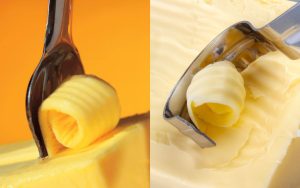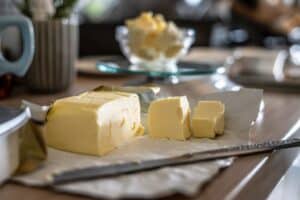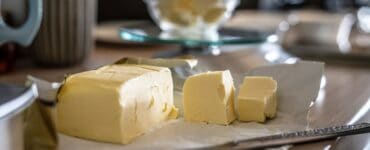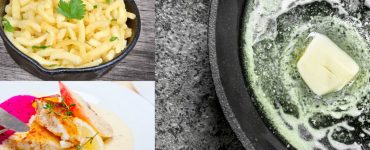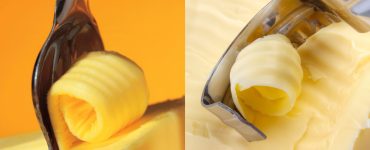The rise of veganism has seen an increased demand for plant-based alternatives to traditional animal products. One such substitute that has gained popularity in recent years is vegan butter. Marketed as a cruelty-free and environmentally friendly option, vegan butter has garnered a significant following among those seeking a more ethical and sustainable diet.
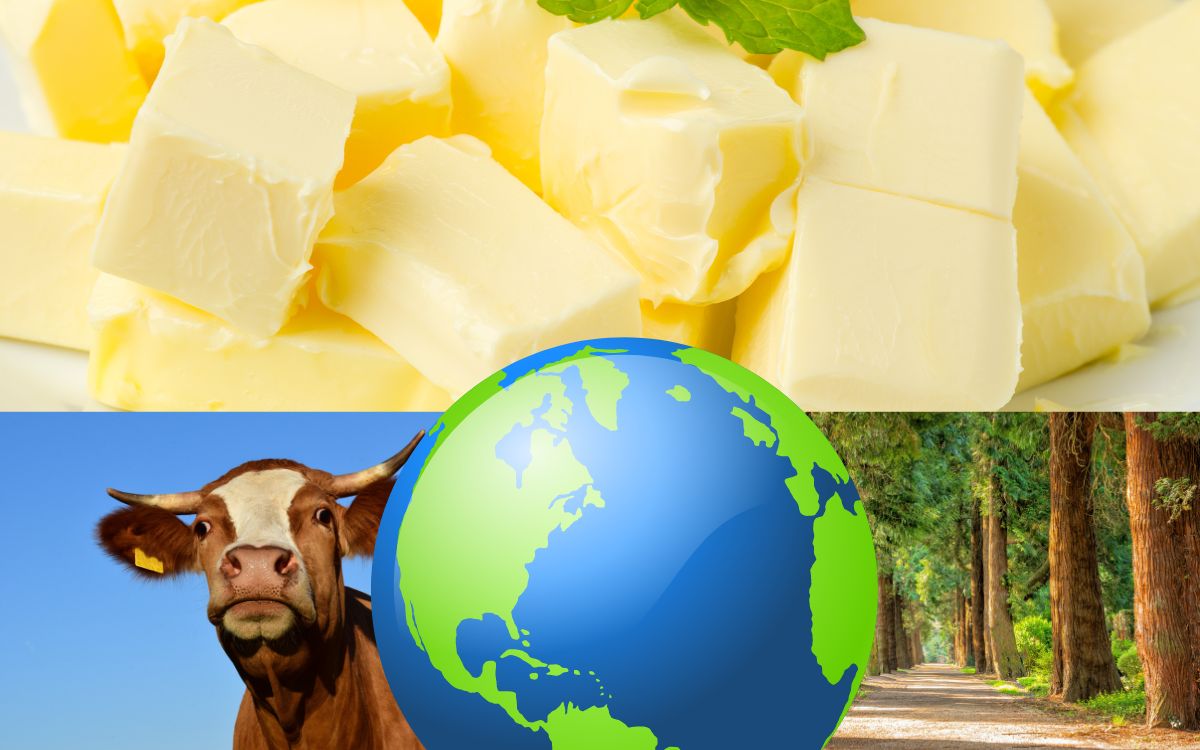
But is vegan butter truly as virtuous as it claims to be? In this blog post, we will delve into the production process, the ingredients used, and the environmental impact of vegan butter, aiming to answer the question: Is vegan butter really cruelty-free and environmentally friendly?
Understanding Vegan Butter: What is It Made of?
Vegan butter has gained significant popularity as a viable alternative to traditional dairy butter, especially among those who follow a vegan or plant-based diet. It offers a way to enjoy the familiar taste and texture of butter without relying on animal-derived ingredients. To truly understand vegan butter, it’s important to explore its composition and the specific ingredients used in its production.
Definition and Explanation
Vegan butter is a plant-based substitute for traditional dairy butter. It is specifically formulated to replicate the taste, texture, and functionality of butter while excluding any animal-derived components. This makes it suitable for individuals who follow a vegan lifestyle or have lactose intolerance.
Common Ingredients in Vegan Butter Production
Plant Oils and Fats
One of the primary components of vegan butter is plant oils or fats. Coconut oil, with its solid consistency at room temperature, is a favored choice among manufacturers due to its ability to provide a creamy texture. Other plant-based oils like palm oil, soybean oil, or sunflower oil may also be used. These oils serve as the base of the vegan butter, providing the desired richness and mouthfeel.
Emulsifiers and Stabilizers
To achieve a smooth and spreadable texture in vegan butter, emulsifiers and stabilizers are commonly used. These ingredients help bind the oil and water components, preventing separation and maintaining the desired consistency. Lecithin, derived from sources like soybeans or sunflower seeds, is a widely used emulsifier in vegan butter production. Additionally, xanthan gum, a natural thickening agent, is often added to enhance texture and stability.
Flavoring Agents and Natural Extracts
To replicate the distinctive taste of traditional butter, vegan butter may contain flavoring agents and natural extracts. These ingredients help achieve a buttery flavor profile without relying on dairy-based components. Nutritional yeast, for example, can provide a savory and slightly cheesy taste, while sea salt contributes to the overall flavor. Other natural extracts or plant-based flavorings may be included to enhance the butter-like experience.
Absence of Dairy-Based Components
One of the defining characteristics of vegan butter is its complete exclusion of dairy-based components. Unlike traditional butter, which is made from milk or cream, vegan butter is entirely plant-based. This allows individuals who follow a vegan or dairy-free lifestyle to enjoy a suitable alternative without compromising their dietary preferences.
Cruelty-Free Aspects of Vegan Butter
Vegan butter is often promoted as a cruelty-free alternative to traditional butter, highlighting its avoidance of animal exploitation and suffering. Let’s delve deeper into the ethical considerations surrounding vegan butter and explore the aspects that contribute to its cruelty-free reputation.
Ethical Concerns in Traditional Butter Production
To understand the cruelty-free nature of vegan butter, it’s essential to acknowledge the ethical concerns associated with traditional butter production. The dairy industry, despite being a significant part of the food industry, has been criticized for its impact on animal welfare.
Animal Exploitation and the Dairy Industry
The production of traditional butter involves the exploitation of dairy cows. Cows are bred and kept primarily for their milk, which is used to produce butter. These animals often endure practices such as forced insemination, separation from their calves shortly after birth, and repetitive milking. The intensive nature of dairy farming can lead to physical and emotional distress for the animals involved.
Separation of Calves from their Mothers
In the dairy industry, calves are typically separated from their mothers shortly after birth to prevent them from consuming the milk intended for human consumption. This separation can be a distressing experience for both the mother and calf, as they form strong bonds during the early stages of life.
Environmental Impact of Livestock Farming
The dairy industry is also associated with significant environmental concerns. Large-scale livestock farming contributes to deforestation, greenhouse gas emissions, and water pollution. The land required for grazing and feed crop production leads to habitat destruction and loss of biodiversity.
Absence of Animal-Derived Ingredients in Vegan Butter
One of the fundamental aspects that make vegan butter cruelty-free is its complete exclusion of animal-derived ingredients. Unlike traditional butter, which is derived from animal milk, vegan butter is entirely plant-based. This eliminates the need for animal exploitation, as no animals are involved in the production process.
Assessing the Cruelty-Free Claims
When evaluating the cruelty-free claims of vegan butter, several factors should be considered:
Sourcing of Plant-Based Ingredients
The ethical aspect of vegan butter lies not only in the absence of animal ingredients but also in the sourcing of its plant-based components. It’s important to consider whether the plant oils and fats used in vegan butter production are obtained from sustainable and responsibly managed sources.
Certifications and Labeling Standards
Certifications and labeling standards can provide valuable information about the cruelty-free and ethical practices of vegan butter brands. Look for certifications such as Vegan Society or Leaping Bunny, which indicate that the product has met specific criteria for animal welfare and cruelty-free production.
Importance of Transparency
Transparency in the production process is crucial to ensure the cruelty-free nature of vegan butter. Brands that prioritize transparency provide detailed information about their ingredient sourcing, manufacturing practices, and commitment to ethical standards. This allows consumers to make informed choices and support companies aligned with their values.
Environmental Impact of Vegan Butter
When evaluating the environmental friendliness of vegan butter, it is important to consider the broader ecological impact of its production. While vegan butter offers an alternative to traditional dairy butter, which is associated with various environmental concerns, it is essential to examine the specific factors that contribute to the overall environmental impact of vegan butter.
Ecological Footprint of Traditional Dairy Production
The production of traditional dairy butter has a significant environmental footprint. Some key environmental concerns associated with the dairy industry include:
Land Use and Deforestation
The dairy industry requires vast amounts of land for cattle grazing and feed crop production. This often leads to deforestation, as forests are cleared to create space for livestock farming. Deforestation contributes to habitat loss, biodiversity decline, and the release of carbon dioxide into the atmosphere.
Greenhouse Gas Emissions
Livestock farming, including dairy production, is a major contributor to greenhouse gas emissions. Cattle produce methane, a potent greenhouse gas that contributes to climate change. Additionally, the production and transportation of feed crops, as well as the processing and distribution of dairy products, contribute to carbon emissions.
Water Consumption and Pollution
Water consumption is another concern in traditional dairy production. It takes a significant amount of water to maintain cattle and grow feed crops, contributing to water scarcity in some regions. Moreover, the discharge of animal waste and runoff from dairy farms can contaminate water sources, leading to water pollution.
Environmental Considerations of Vegan Butter
While vegan butter offers an alternative to traditional butter, it is important to assess its own environmental impact. Several factors contribute to the overall environmental profile of vegan butter:
Sourcing of Plant-Based Ingredients
The sustainability of the plant oils and fats used in vegan butter production is a crucial aspect. For example, the use of palm oil has raised concerns due to its association with deforestation and habitat destruction. It is important to consider brands that prioritize the use of sustainably sourced ingredients or offer alternatives that are environmentally friendly, such as coconut oil from responsible sources.
Manufacturing Processes and Energy Consumption
The methods and energy sources used in the production of vegan butter can influence its environmental impact. Brands that employ energy-efficient processes and renewable energy sources help reduce the carbon footprint associated with manufacturing.
Packaging and Waste Management
The packaging and waste management practices of vegan butter brands also contribute to their environmental friendliness. Opting for brands that use sustainable packaging materials, such as recyclable or compostable materials, can minimize waste and environmental impact.
Carbon Footprint Comparison
Comparing the carbon footprint of vegan butter to traditional butter provides insight into the environmental advantages of plant-based alternatives. While individual carbon footprints may vary depending on production methods and ingredient sourcing, vegan butter generally has a lower carbon footprint compared to dairy butter due to the reduced impact of livestock farming.
Conclusion
In conclusion, the question of whether vegan butter is truly cruelty-free and environmentally friendly requires careful consideration and a nuanced understanding of the product’s production process and ingredients.
While vegan butter does not involve the direct exploitation of animals, the sourcing and production of its components can have environmental and ethical implications. The use of palm oil and other potentially unsustainable ingredients raises concerns about deforestation and habitat destruction. Additionally, the processing methods involved in creating vegan butter may contribute to carbon emissions and other environmental impacts.


